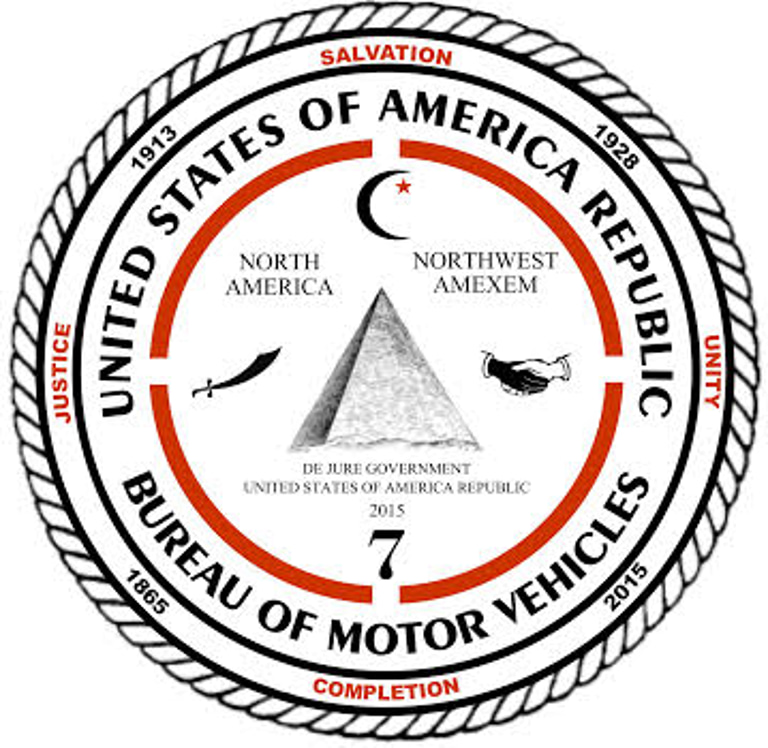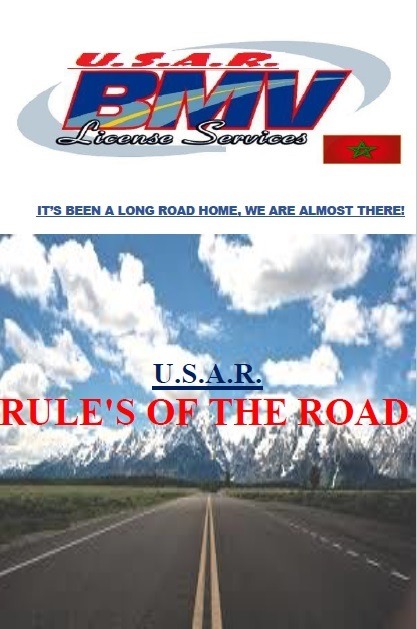RULES OF THE ROAD
RULES OF THE ROAD
Rules of the road of the United States of America Republic National Government are laws and guidelines that govern the behavior of drivers, cyclists, pedestrians, and other road users. They are designed to ensure safety, order, and efficient movement of traffic throughout the provinces. Here are some key rules of the road:
1. Obey Traffic Signals and Signs:
Traffic Lights: Follow the color-coded signals—red means stop, green means go, and yellow means caution.
Stop Signs: At stop signs, drivers must come to a complete stop, yield to other vehicles or pedestrians, and proceed when it's safe.
Yield Signs: Yield to vehicles or pedestrians in situations where they have the right of way.
Speed Limits: Adhere to the posted speed limits, which are set based on road type, location, and conditions.
2. Right of Way:
Pedestrian Right of Way: Pedestrians generally have the right of way at crosswalks, but drivers should always be cautious and yield when necessary.
Intersections: When approaching an intersection without signs or signals, vehicles on the right have the right of way. At intersections with traffic signals, follow the light.
Roundabouts: Yield to traffic already in the roundabout unless otherwise directed.
3. Speed Limits:
Follow Speed Limits: Speed limits are set to ensure safe travel. Always adhere to the speed limit, even if conditions seem favorable. Speeding can result in fines or accidents.
Adjust for Conditions: Sometimes, driving at the speed limit may not be safe due to weather, traffic, or road conditions. In those cases, it's essential to slow down.
4. Lane Use and Lane Changes:
Use Turn Signals: Always signal when changing lanes or turning to alert other road users of your intentions.
Stay in Your Lane: Follow lane markings and use the correct lane for your direction of travel.
Overtaking: Pass other vehicles safely, usually on the left, and only when there is enough space and visibility.
5. Stop for School Buses:
When a school bus has its stop sign extended, vehicles in both directions must stop, regardless of whether they’re behind or approaching the bus.
6. No Drunk or Impaired Driving:
DUI/DWI: Never drive under the influence of alcohol, drugs, or any substance that impairs your ability to drive. The legal blood alcohol content (BAC) limit is typically 0.08%, but it may be lower for certain drivers (e.g., commercial drivers).
Penalties: Driving while impaired can result in fines, license suspension, accidents, and even jail time.
7. Use of Seatbelts:
Always Wear Seatbelts: Both the driver and passengers must wear seatbelts, regardless of their position in the car. It’s required by law in most places, and wearing seatbelts significantly reduces the risk of injury in an accident.
Child Safety: Children must be properly secured in age-appropriate car seats or booster seats.
8. Stop for Emergency Vehicles:
Pull Over for Sirens: When an emergency vehicle (e.g., law enforcement, ambulance, fire truck) approaches with its lights and sirens on, pull over to the right side of the road and stop until the vehicle passes.
Yield to Emergency Vehicles: Always yield to emergency vehicles when they are in use, and avoid blocking intersections or crosswalks.
9. Safe Following Distance:
Two-Second Rule: Maintain at least a two-second following distance behind the vehicle in front of you. In poor weather or traffic conditions, increase the distance to allow more stopping time.
Avoid Tailgating: Never follow too closely behind another vehicle. This reduces the chance of avoiding an accident in case of sudden stops.
10. Avoid Distractions:
No Texting/Phone Use: Avoid using a mobile phone or engaging in other distractions while driving. In many places, using a phone without a hands-free device is illegal.
Focus on the Road: Pay full attention to the road and surroundings while driving to ensure quick reactions to changing conditions.
11. Parking Regulations:
Observe Parking Signs: Always follow posted parking signs and regulations. Don’t park in spots designated for disabled individuals, fire lanes, or in spaces where parking is prohibited.
Parallel Parking: In most areas, parallel parking is required along curbside parking spots. Make sure to park entirely within the lines and avoid blocking traffic.
12. Roundabouts and Intersections:
Yield to Traffic in Roundabouts: In roundabouts, yield to traffic already circulating. Wait for a gap in the traffic flow before entering.
Clear Intersections: Never block intersections; only enter if you can clear it before the light turns red.
13. Use of High Beams:
Don’t Use High Beams in Traffic: High beams should be used when driving in dark, rural areas where there are no other vehicles, but you must dim them when approaching oncoming traffic or driving behind another vehicle to avoid blinding the other driver.
14. Pedestrian and Bicycle Rules:
Yield to Pedestrians: Always stop for pedestrians at crosswalks, and be vigilant of pedestrians in areas with heavy foot traffic.
Cyclists: Cyclists have the right to share the road, and drivers should give them plenty of space when passing.
15. Motorcycle Rules:
Motorcycle Lane Sharing: Motorcycles are allowed to share lanes with other vehicles, but drivers should always give them space and avoid crowding.
Helmets: In many places, wearing helmets is mandatory for motorcyclists.
Additional Tips for Safe Driving:
Check Blind Spots: Always check your blind spots before changing lanes or merging onto highways.
Use Your Headlights: Turn on your headlights in low visibility conditions (e.g., rain, fog, night driving).
Drive Defensively: Always be alert and anticipate what other drivers might do. Expect the unexpected, and be prepared to react.
UNITED STATES OF AMERICA REPUBLIC
BUREAU OF MOTOR VEHICLES
ADDRESS:
USAR BMV
1499 Martin Luther King Drive
Ste 64102
Province Indiana, 46401
Support
© 2025. All rights reserved.


